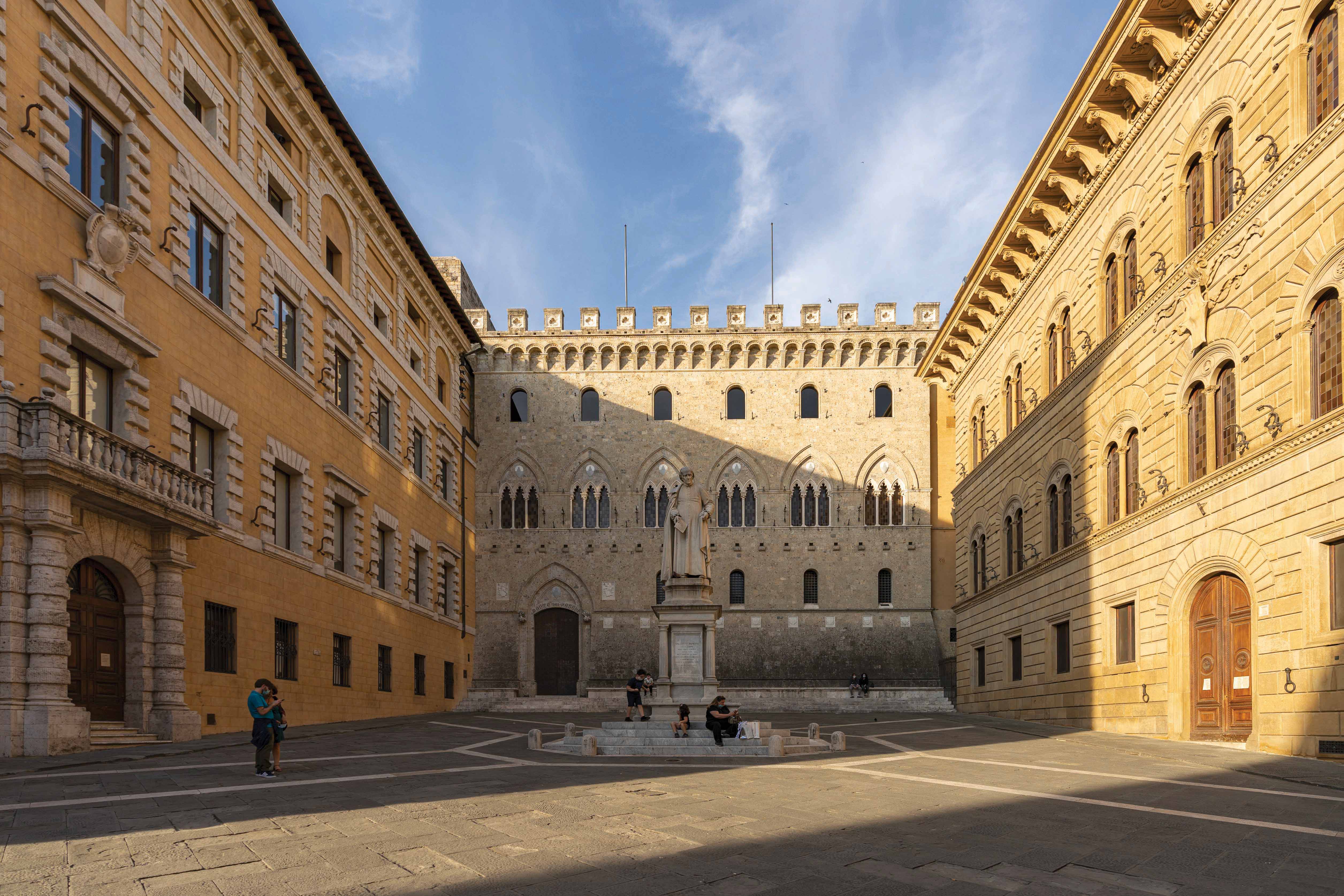3.9 The banks: Siena’s fortune
Two of the main streets in Siena, Via Banchi di Sopra and Via Banchi di Sotto, get their names from one of the city’s most widespread trades, that of the moneychanger. Each one had his long bench (banco) along the city section of the Via Francigena, the main thoroughfare for people and goods. Many bankers were also professional businessmen and invested in trade, making a decisive contribution to the city’s development.
At the time, the city looked vertical: the great families of the city built towers as symbols of power and for personal defence.
Along this route you will see signs of thirteenth-century Siena, composed of towers, tower-houses and fortified buildings: homes built in the city by banking families for defence and as symbols of their power.
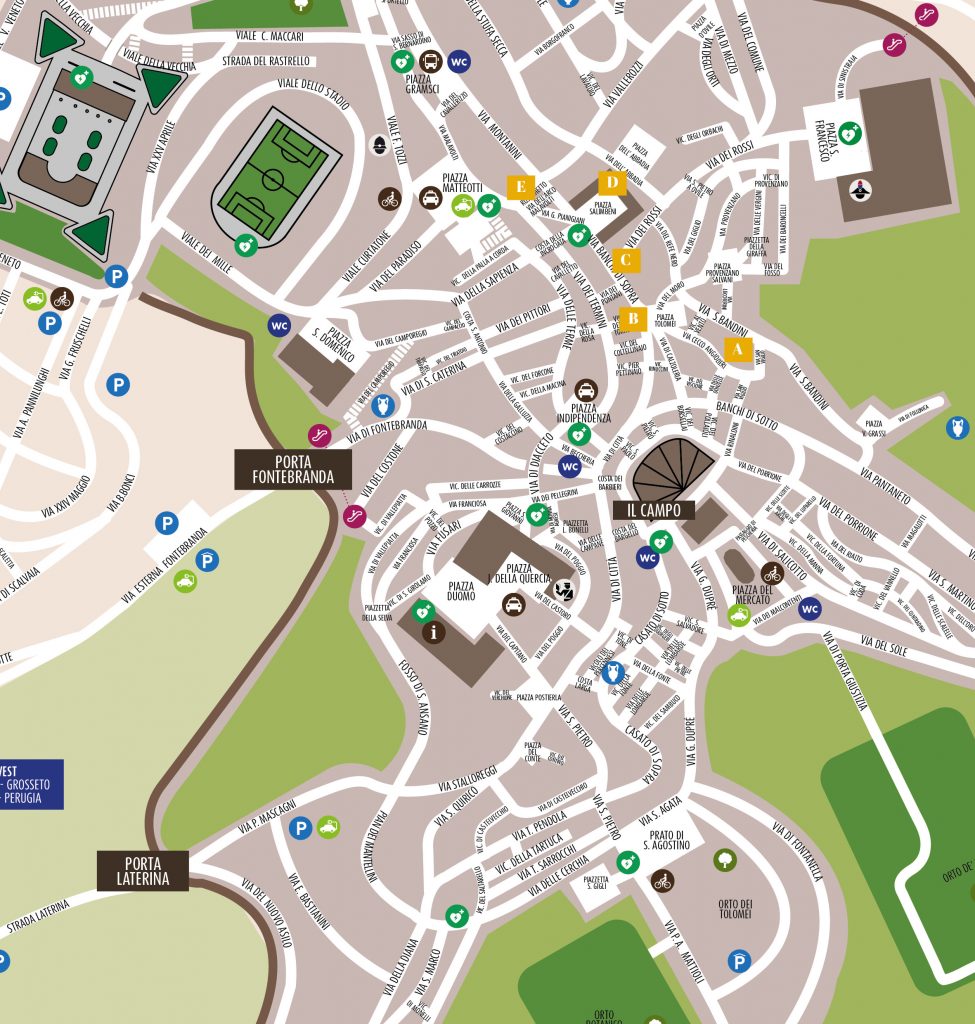
Castellare degli Ugurgieri (fortified building of the Ugurgieri family)
Vicolo del Castellare
In the thirteenth century many Sienese families – the Salimbenis, Rossis and Malavoltis – had their fortified buildings, symbols of their power. They were groups of tall buildings designed for defence around a central courtyard. The Ugurgieri family’s castellare is the last of this type of building remaining. They were originally powerful landowners and then fully integrated into the city’s fabric.
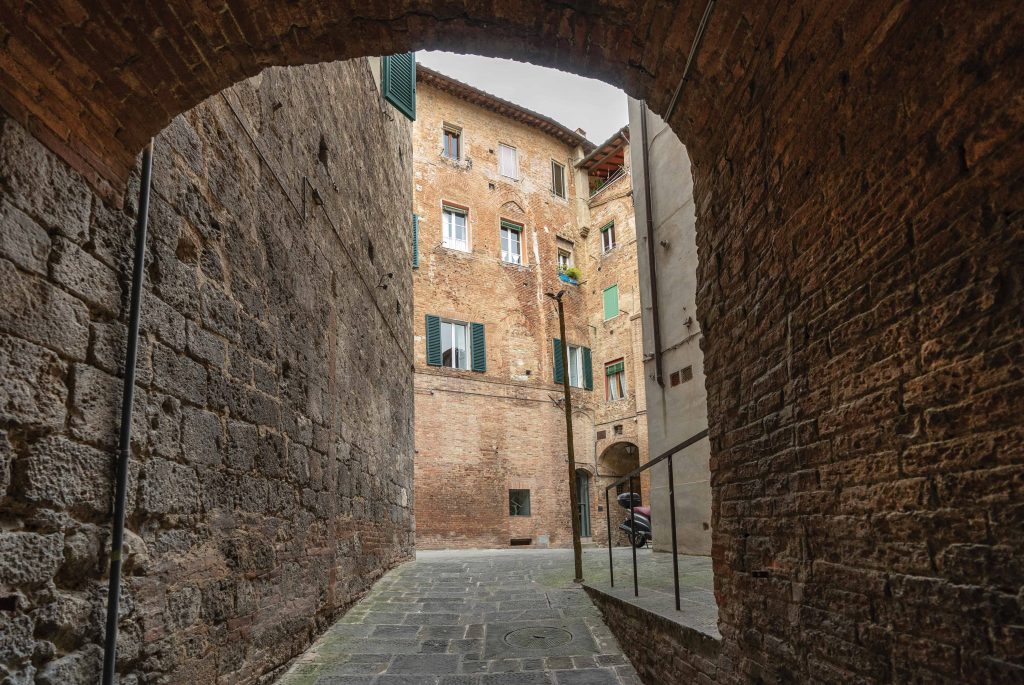
Palazzo Tolomei
was the first palace built in Siena: a new symbol of power, no longer based on height or the number of towers a family had. The Tolomeis were merchant magnates, who came to power through the fortune they accumulated in banking.
Before building the palace, the Tolomeis had their towers, whose foundations can still be seen in the palace basement. They were destroyed in 1268 in battles against the Salimbenis, a Ghibelline family; the Tolomeis were Guelfs.
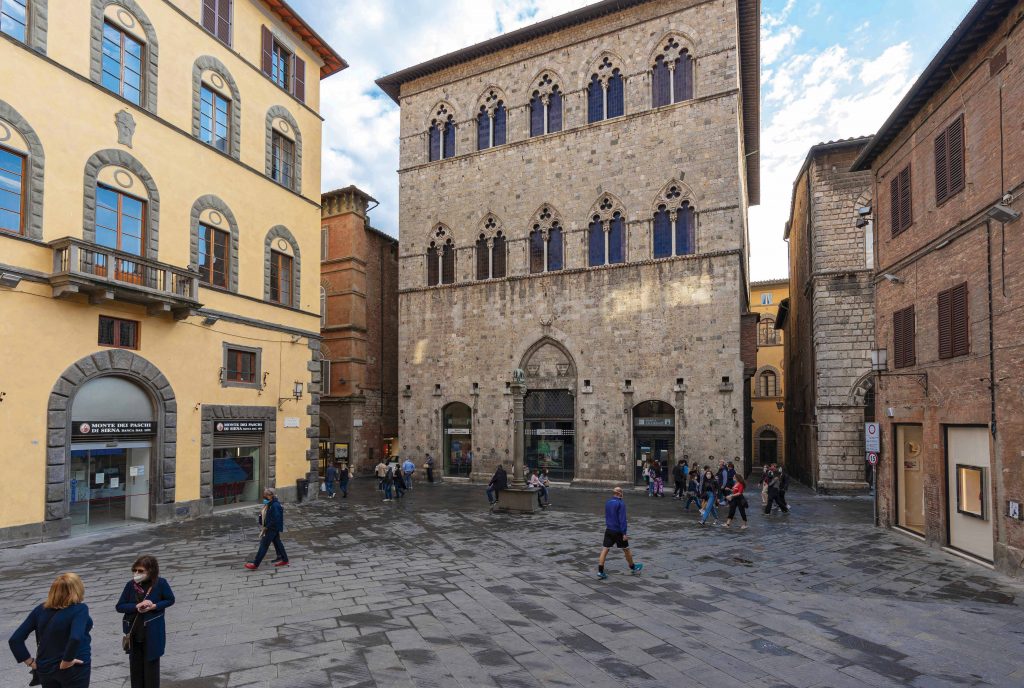
Castellare dei Rossi
Via dei Rossi – Banchi di Sopra
The Rossis were a rich business family with large properties near the Via Francigena, identifiable in the present Palazzo Bichi Ruspoli. Of their fortified building only traces remain, which you can see in the shop at 54 Via Banchi di Sopra through the glazed ceiling.
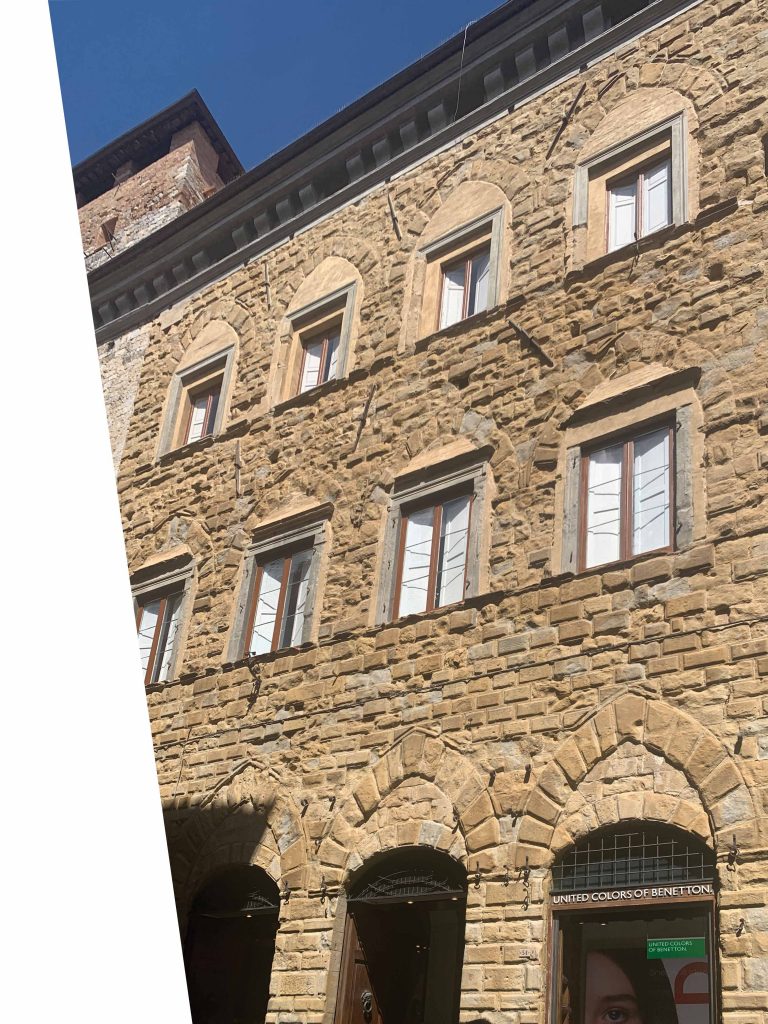
Torre Salimbeni
Piazza Salimbeni
Piazza Salimbeni looks like a perfect example of the marriage of mediaeval and renaissance architecture. In fact, it is the work of the architect Giuseppe Patrini who designed large parts of the façade of the Palazzo Salimbeni e Spannocchi, as well as the square itself, at the end of the nineteenth century. From inside the old Monte dei Paschi Bank building, where you can get a good view of the square, you can still see the tower of the Salimbeni merchant family, who attained power through the fortune they built.
The tower, now much lower than it was originally, is one of the few still visible on Siena’s skyline – a reminder of a time when the city, thanks to its vertical buildings, was nicknamed il canneto (the reedbed).

Torre Malavolti (Malavolti Tower)
Via Pianigiani – Via Montanini
The Malavoltis were a rich family of the old consular aristocracy who turned to banking and trade. They held land along the Via Francigena and you can still see one of their towers, formerly connected to another three towers by mid-air masonry bridges that are still partly visible.
To the right of the tower, along Via Montanini, you can also see some Roman architectural remains, reused in the mediaeval walls: blocks of Roman brick and an inscription in capital letters “VERO ET VALE” (roughly: “true and strong”).
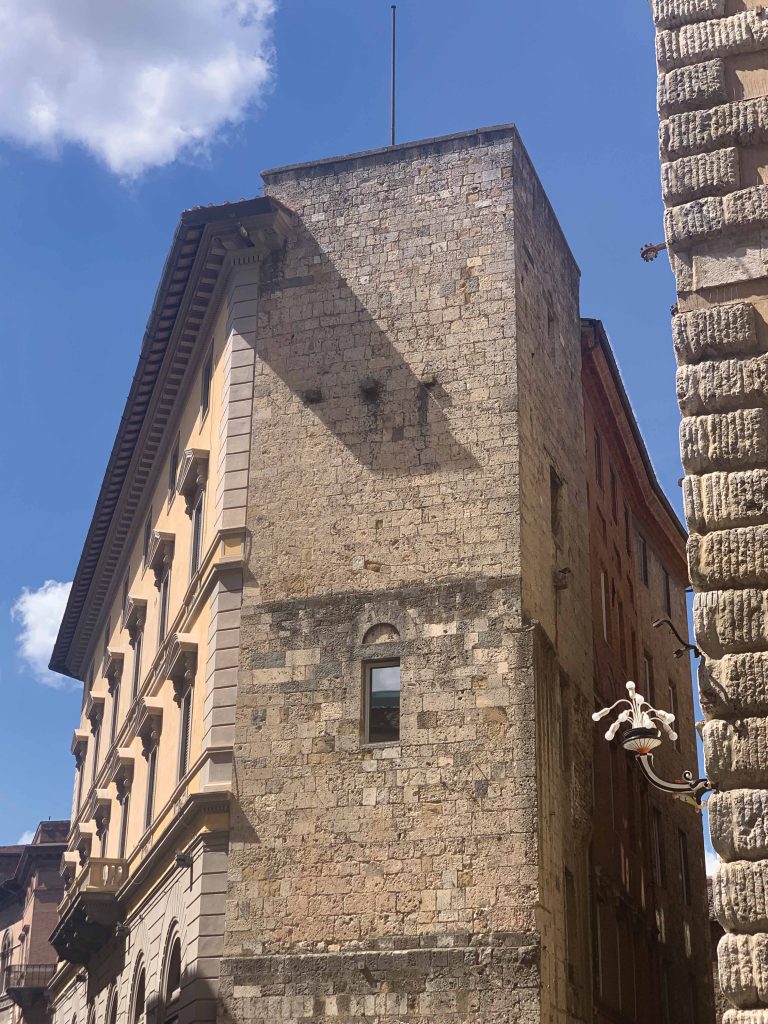
Texts edited by: Martina Dei
Editorial coordination: Elisa Boniello e Laura Modafferi
Photos: Achivio Comune di Siena e Fulvio Muzzi
Graphic design: Michela Bracciali
